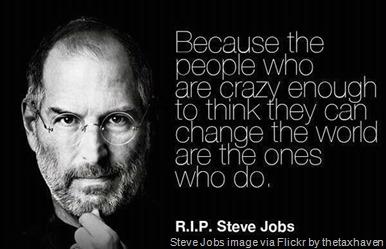 You can’t survive as an entrepreneur without resilience, because you are going to fail at least once, maybe multiple times. That’s the nature of trying something that’s never been done before. Resilience means not giving up, and being energized by what you have learned. As Thomas Edison said, "I have not failed. I have just found ten thousand ways that won't work."
You can’t survive as an entrepreneur without resilience, because you are going to fail at least once, maybe multiple times. That’s the nature of trying something that’s never been done before. Resilience means not giving up, and being energized by what you have learned. As Thomas Edison said, "I have not failed. I have just found ten thousand ways that won't work."
If you need more evidence that great entrepreneurs survived through resilience, just look into the backgrounds of more recent entrepreneurs like Steve Jobs, Bill Gates, and Elon Musk. They all experienced multiple setbacks along the way, but they persevered to become some of the most well known and respected entrepreneurs of our time.
In a new book on the subject, “Stronger: Develop the Resilience You Need to Succeed,” by George Everly, Douglas Strouse, and Dennis McCormack, these experts on the subject of human behavior and resilience outline five key factors of personal resilience, which I believe every aspiring entrepreneur should understand and develop before initiating a startup:
-
Maintain active optimism. Optimism is the mindset to expect the best outcome from every situation. This gives entrepreneurs the capacity to pivot from a failing tactic, and implement actions to increase success. The key to building active optimism is observing how others were successful in similar situations, and believing you can do the same.
-
Courage to take decisive action. Decisiveness mitigates adversity, helps you rebound, take responsibility, and promotes growth. Building decisiveness requires eliminating fear, procrastination, and the urge to please everyone. Practice making decisions as a positive learning experience. Understand that any decision is usually better than no decision.
-
Let a good moral compass guide you. We all need a guiding light when adversity strikes. The four points of honesty, integrity, fidelity, and ethical behavior work best in business and personal life. Solidify your moral compass by setting virtuous goals, keying off the norm of inspiring peers, practicing self-control, and celebrating every successes.
-
Show relentless tenacity and determination. Decide that giving up is simply not an option. Learn that tenacity is self-sustaining when persevering actions are rewarded. Find tenacious role models, and garner the support of peers and friends. Great entrepreneurs become tenaciously defiant when told they cannot succeed. Then they get it done.
-
Gain strength from the support of others. Interpersonal support is believed to be the single best driver of human resilience. In business, this means that the people you surround yourself with are crucial – team members, advisors, investors, partners, and peers. Avoid toxic people like the plague. Practice active listening and show appreciation.
Very few entrepreneurs are born with the resilience needed. Yet, it is something any startup founder can acquire as an advantage in the ever-more-competitive business world. A good part of it is fighting the urge to revert back to our comfort zones, and fall back into old habits. From the pain of failure comes wisdom, from fear comes courage, and from struggling comes strength.
Resilience also comes from paying attention to your own needs and feelings. Entrepreneurs need to engage in outside activities that they enjoy and find relaxing, to keep their body and mind fit to deal with the unending challenges of every business. In addition, it’s important to have a higher level purpose in life, such as insanely great design, to guide your resolve and your decisions.
The Steve Jobs story of resilience is a classic example of a higher purpose, woven into the five factors above, ultimately leading to success. His elegant design decisions may have failed him initially at Apple, but he went on to hone them at NeXT and Pixar, and finally won his legacy by coming back to Apple with winning innovative designs for the iMac, iPod, iPhone, and iPad.

